The Best Seasons and Times to go Paragliding
4 January 2024 | Updated on January 04, 2024 | 0 comments
Paragliding is an exhilarating adventure sport that allows you to soar through the skies and experience a breathtaking bird’s-eye view of the world below. Whether you are a seasoned pilot or a newbie, knowing the best seasons and times to go paragliding can greatly enhance your flying experience.
While paragliding can be enjoyed all year round, certain seasons offer more favorable conditions for this thrilling activity. The ideal time for paragliding is typically between mid-spring and the end of summer. During this period, the weather is generally pleasant, with less rainfall and favorable thermal conditions, allowing for longer and smoother flights.
However, each season offers its own unique experiences for paragliders. From flying in winter to soaring in spring and sizzling summertime flights, there are opportunities for adventure throughout the year. Let’s explore the best times to go paragliding in different seasons and specific locations.
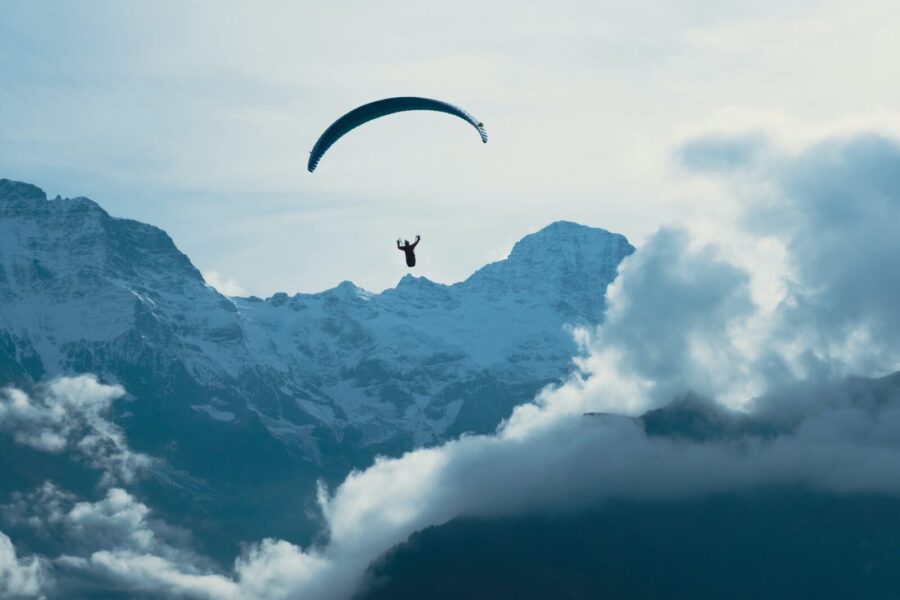
Key Takeaways:
- Paragliding can be enjoyed all year round, but the best seasons are usually between mid-spring and the end of summer.
- Winter offers quieter flights with more laminar conditions, making it ideal for relaxed flights and combining paragliding with winter sports.
- Spring brings stronger sun but turbulent thermal conditions, making it suitable for experienced pilots who prefer morning or evening flights.
- Summer offers changeable conditions throughout the day, allowing beginners to fly in calmer mornings and evenings, and experienced pilots to soar all day.
- Each location has its own specific best paragliding season, so it’s important to check the weather and conditions before planning a trip.
Paragliding in Winter
Winter is a quieter season for paragliding, offering a unique experience for enthusiasts who dare to take flight in colder temperatures and challenging conditions. While the lower sun angle and fewer thermal bubbles may limit the possibilities for soaring high and long, the laminar and calm conditions provide an opportunity for relaxed flights and a different perspective of the winter landscape.
Paragliding in winter can be an excellent way to combine the thrill of flying with other winter sports like skiing or snowboarding. Imagine gliding through the air, witnessing the snow-covered mountains, and feeling the crisp winter air on your face. It’s a remarkable way to embrace the beauty of the season and add an extra element of adventure to your winter activities.
“Winter is the time to discover a serene side of paragliding. The peacefulness and tranquility of the winter skies create a sense of harmony that’s truly magical.” – Thomas Walker, experienced paraglider
It’s important to note that flying in winter requires proper preparation and care. The colder temperatures demand appropriate clothing and equipment to ensure your safety and comfort throughout the flight. Pilots should also stay updated with weather forecasts and be aware of the specific challenges winter conditions may present.
If you’re considering paragliding in winter, be sure to consult with experienced pilots or instructors who can provide guidance based on their knowledge of local flying sites and winter flying techniques. Their expertise will help you make the most of your winter paragliding adventures while ensuring that you’re well-prepared and equipped for the unique challenges and rewards that flying in cold weather brings.
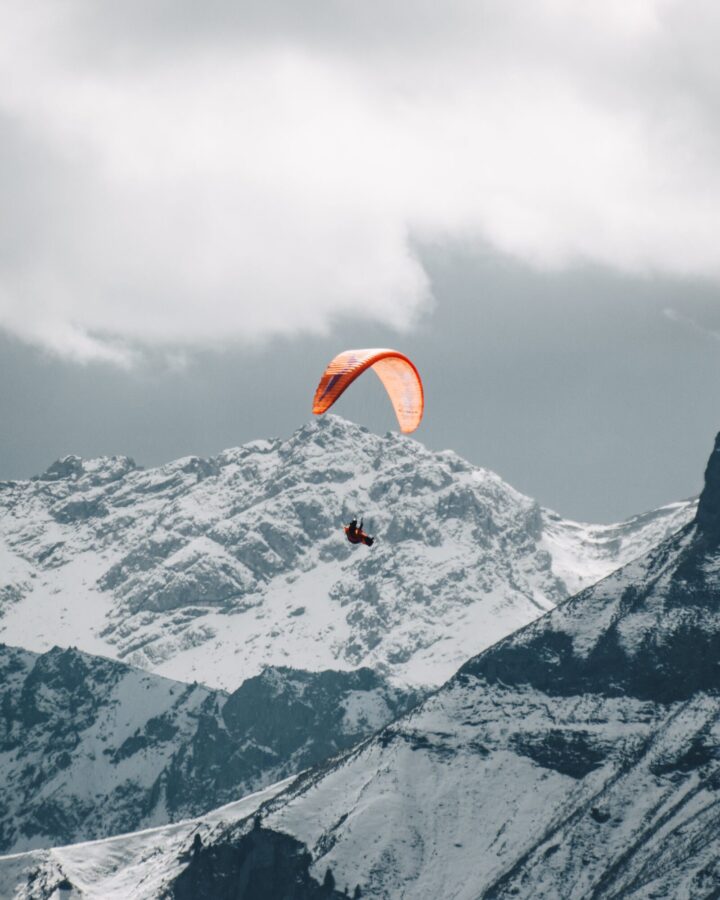
Benefits of Paragliding in Winter
Paragliding in winter offers several advantages that make it an attractive season for flying enthusiasts:
- Less crowd: The quieter season means fewer pilots in the air, allowing for a more peaceful and personal experience.
- Laminar conditions: The absence of strong thermals leads to more stable and predictable air, providing an opportunity for smooth and relaxed flights.
- Winter scenery: Flying in winter allows you to witness breathtaking views of snow-covered landscapes and frozen lakes, adding a touch of magic to your flights.
- Possible combination with winter sports: Winter paragliding can be seamlessly combined with activities like skiing or snowboarding, allowing you to enjoy two thrilling pursuits in one trip.
- Unique perspective: Seeing familiar landscapes from the air during winter offers a fresh and captivating viewpoint, showcasing nature’s transformation under the blanket of snow.
Paragliding in winter may not be the most popular time, but for those seeking a serene and introspective flying experience, it can be a truly rewarding season to take to the skies. Embrace the cold, embrace the stillness, and experience the beauty of paragliding in the midst of winter.
Paragliding in Spring
When it comes to paragliding, spring is an exciting season filled with unique opportunities and challenges. As the weather starts to warm up, the sun becomes higher and more powerful, creating ideal conditions for those who love soaring through the sky. However, it’s important to note that spring paragliding conditions can vary depending on the timing within the season.
In early spring, paragliders can expect strong and turbulent thermal conditions. The trees have yet to sprout their leaves, which means that the thermals are not yet blocked by foliage, allowing them to become more intense. Experienced pilots can take advantage of these powerful thermals for exhilarating flights and record-breaking distances. It’s an opportunity to push the limits of their skills and enjoy breathtaking views from high above.
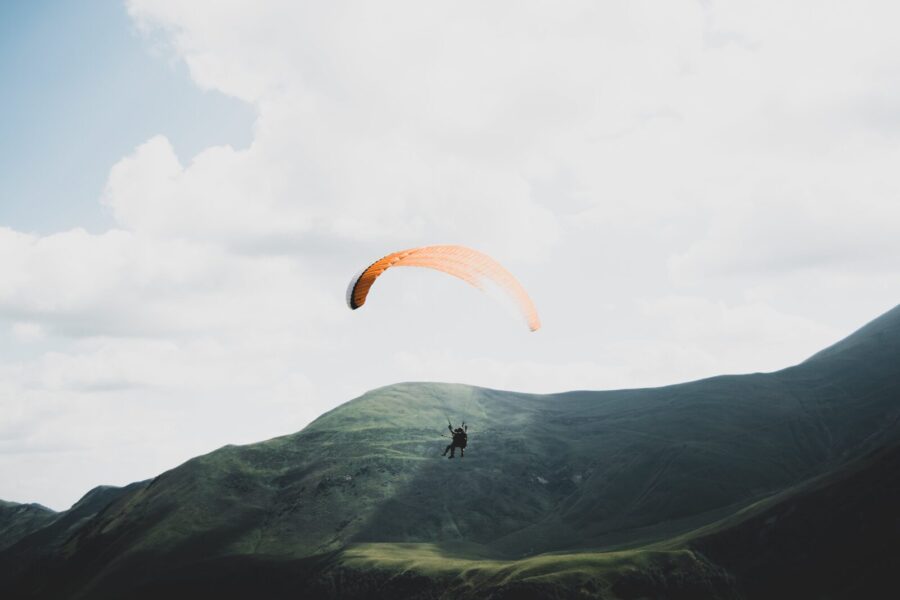
However, if you’re a beginner or prefer a more relaxed paragliding experience, it’s advisable to be cautious during early spring. The strong thermals can be challenging to handle, especially for novices. It’s recommended to fly in the morning or evening when the conditions are calmer and the thermals are less intense. This allows beginners to gain confidence and get a feel for paragliding without being overwhelmed by the strong upward currents.
As spring progresses into late spring, the paragliding conditions start to change. The trees are now in full bloom, which alters the thermal dynamics. The leaves provide shade, reducing the intensity of the thermals and making them more predictable. Late spring offers a more stable and relaxed flying experience compared to early spring.
Overall, spring is a fantastic time for paragliding enthusiasts. Whether you’re an experienced pilot looking for adrenaline-pumping flights or a beginner seeking a gentle introduction to the sport, spring provides a range of options. Just make sure to consider the time within the season, adapt your flying strategy, and always prioritize safety.
Benefits of Paragliding in Spring:
- Higher and more powerful sun for enhanced thermal conditions
- Opportunity for experienced pilots to achieve record-breaking flights
- Morning and evening flights offer calmer conditions for beginners
- Full foliage in late spring provides more predictable thermals
Spring Paragliding Tips:
- Check weather forecasts regularly to plan your flights
- Be cautious during early spring and fly in the morning or evening
- Gradually increase your flying time and altitude as you gain experience
- Consider taking lessons or flying with an experienced pilot for guidance
Paragliding in Summer
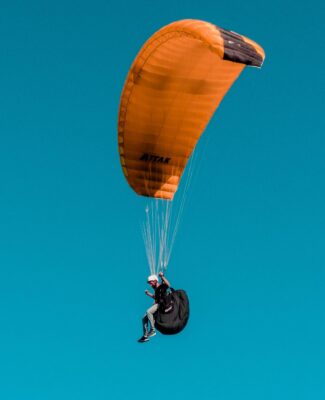
Summer is a fantastic time for paragliding, as it offers ideal conditions and plenty of opportunities to soar through the sky. With high sun and lush foliage, the summer months create a dynamic environment for paragliders. Whether you’re a beginner or an experienced pilot, there are various ways to enjoy paragliding during the summer season.
For beginners, the calmer conditions in the morning and evening are perfect for taking flight. The air is cooler, and the thermals are less turbulent, providing a smoother and more enjoyable experience. It’s a great time to learn the basics of paragliding and gain confidence in the air.
Experienced pilots, on the other hand, have the advantage of longer daylight hours and can take full advantage of the thermals throughout the day. The warm air and strong thermals allow for extended flights and the opportunity to explore new heights. Summer paragliding offers unmatched freedom and a chance to indulge in the sheer joy of flying.
However, it’s important to stay alert and be aware of the weather conditions during the summer months. Thunderstorms can occur, especially in the afternoon, and it’s crucial to avoid flying in such conditions. Always check the forecast before heading out and be prepared to alter your plans if necessary.
To summarize, summer is a fantastic time for paragliding enthusiasts. Whether you’re a beginner or an experienced pilot, there are ample opportunities to enjoy the sport during the summer months. Take advantage of the cooler morning and evening conditions as a beginner, or soar high on the thermals throughout the day as an experienced pilot. Just remember to prioritize safety by staying alert to any weather changes and avoiding flying during thunderstorms. Happy flying!
Best Paragliding Seasons in Specific Locations
Each location has its own specific best paragliding season. Whether you’re looking for the ideal time to visit Pilat Dune in France, Annecy in France, Auvergne in France, the Canary Islands, Pokhara in Nepal, Morocco, or Reunion Island, we have detailed the best seasons and conditions for paragliding in each of these breathtaking locations.
Pilat Dune, France
Pilat Dune, located in France, offers incredible paragliding opportunities. The best time to visit Pilat Dune for paragliding is during the low season, before 15 June and after 15 September. During this time, you can enjoy better flying conditions and fewer restrictions.
Annecy, France
Annecy, another popular paragliding destination in France, has a favorable paragliding season that typically spans from spring to autumn. Whether you’re an experienced paraglider or a beginner, Annecy offers diverse flying conditions throughout this season, allowing you to soar above its stunning landscapes.
Auvergne, France
If you’re in Auvergne, France, you’re in luck! This location offers good flying conditions all year round, with different seasons providing unique experiences. Whether you prefer summer flights or flying through the picturesque autumn colors, Auvergne has something to offer for every paragliding enthusiast.
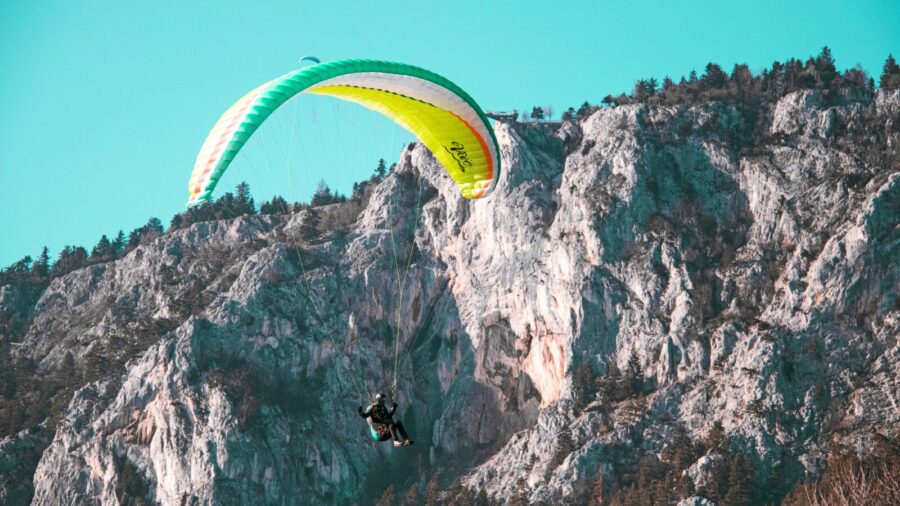
The Canary Islands
The Canary Islands are a year-round paragliding paradise. However, the best conditions for paragliding in the Canary Islands are typically found between April to June and September to October. During these months, you can experience optimal weather conditions and enjoy thrilling flights above the stunning volcanic landscapes of the islands.
Pokhara, Nepal
Pokhara, Nepal, is a popular paragliding destination known for its breathtaking views of the Himalayas. The best season for paragliding in Pokhara is from September to the end of April, offering clear skies and stable conditions for exhilarating flights above the stunning landscapes and lakes of Nepal.
Morocco
Morocco is an incredible destination for paragliding enthusiasts. The best paragliding conditions in Morocco can be found from the end of September to mid-April. During this period, you can enjoy stable weather conditions and experience the thrill of soaring above Morocco’s diverse landscapes.
Reunion Island
Reunion Island is an all-year-round paragliding destination, allowing you to take to the skies for 300 days a year. However, the conditions vary throughout the year. From November to April, you can expect different flying conditions compared to the period from May to October. Whether you’re navigating the stunning landscapes during summer or exploring the island’s dormant volcanoes during winter, Reunion Island offers an unforgettable paragliding experience.
Now that you know the best paragliding seasons in these amazing locations, you can plan your next adventure accordingly. Whether you’re seeking thrilling flights, awe-inspiring views, or new paragliding challenges, these destinations have something to offer for every paragliding enthusiast.
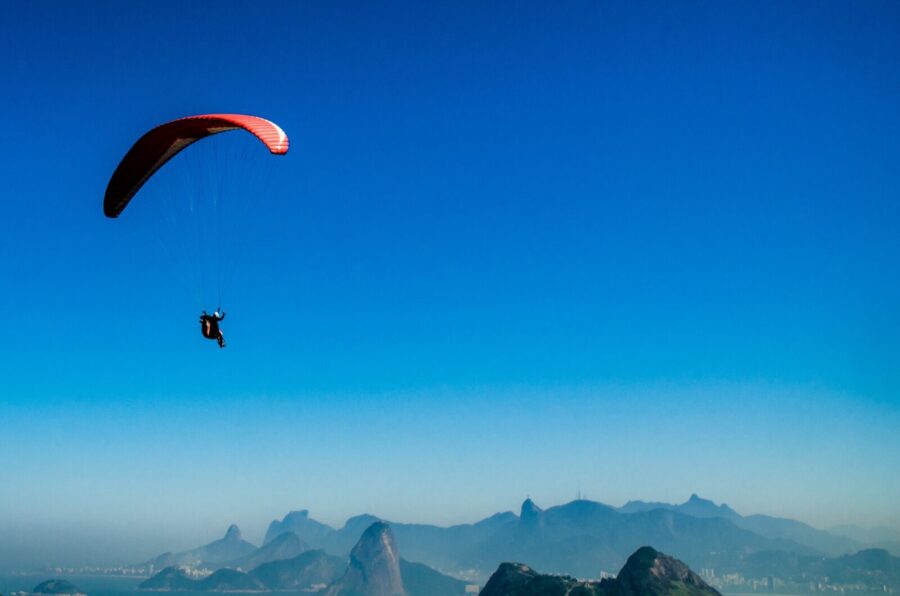
Conclusion
Paragliding offers year-round opportunities for flying, allowing enthusiasts to experience the thrill of soaring through the sky in different seasons. Each season brings its own unique experiences and conditions, making it important for paragliders to consider personal preferences, location, and weather conditions when deciding the best time to go flying.
The specific seasons for paragliding vary depending on the location. Some destinations, such as Pilat Dune and Annecy in France, have favorable paragliding seasons from spring to autumn, while places like the Canary Islands offer year-round flying conditions. Other locations, like Pokhara in Nepal and Morocco, have their peak paragliding seasons during specific months. It is essential to research and determine the best paragliding season for each destination.
In summary, paragliding provides exhilarating experiences and breathtaking views for adventure seekers. With the right weather conditions and preparations, paragliding can be enjoyed all year round.
FAQ
What is the best time to go paragliding?
The best time to go paragliding is typically between mid-spring and the end of summer when the weather conditions are more favorable.
What are the ideal conditions for paragliding?
The ideal conditions for paragliding include less rain, pleasant temperatures, and favorable thermals for longer flights.
When is the optimal time for paragliding?
The optimal time for paragliding is during mid-spring and the end of summer when the weather conditions are generally better.
What are the paragliding weather requirements?
Paragliding requires weather conditions with less rain, pleasant temperatures, and favorable thermals for longer flights.
What is the best time of day for paragliding?
The best time of day for paragliding is usually in the morning or evening when the conditions are calmer.
Is there a peak paragliding season?
The peak paragliding season is typically between mid-spring and the end of summer when the conditions are more favorable for paragliding.
What is the best weather for paragliding?
The best weather for paragliding includes less rain, pleasant temperatures, and favorable thermals for longer flights.
When should I go paragliding?
The optimal time to go paragliding depends on personal preferences, location, and weather conditions. It is recommended to go between mid-spring and the end of summer for better conditions.
What is the best time for paragliding in winter?
Winter is a quieter season for paragliding due to colder temperatures, lower sun angle, and fewer thermal bubbles. It is best for relaxed flights and combining paragliding with other winter sports.
What is the best time for paragliding in spring?
The best time for paragliding in spring is in the morning or evening when the conditions are calmer, especially for beginners. However, experienced pilots can take advantage of strong and turbulent thermal conditions for greater flights.
What is the best time for paragliding in summer?
The best time for paragliding in summer is in the morning and evening when the conditions are calmer, especially for beginners. Experienced pilots can enjoy flying throughout the day, taking advantage of thermals and leafy trees.
When is the best paragliding season in specific locations?
Each location has its own specific best paragliding season. For example, Pilat Dune in France is best visited during the low season (before 15 June and after 15 September) for better flying conditions and fewer restrictions.
Is paragliding suitable for those with little or no experience?
For those with little or no paragliding experience, hiring a certified mountain guide and a professional paragliding instructor specialized in tandem flights is highly recommended.
Does paragliding offer year-round opportunities for flying?
Yes, paragliding offers year-round opportunities for flying, with each season offering unique experiences and conditions.
What can I expect from paragliding?
Paragliding can provide exhilarating experiences and breathtaking views for those who love adventure in the sky.
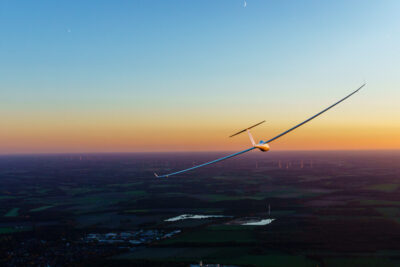
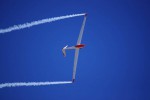
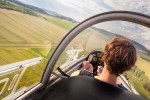

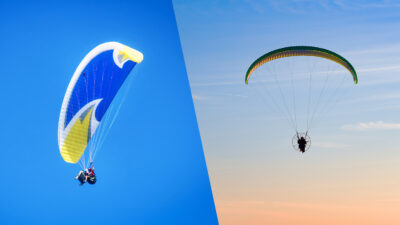

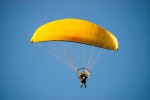
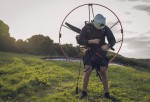
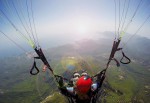
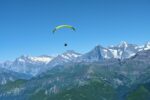

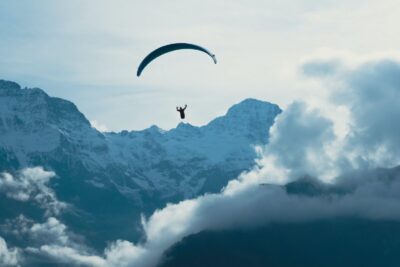
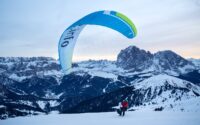


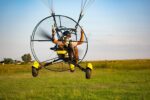
No comments posted yet
Comments are moderated for relevance and respectfulness.
Please keep the discussion focused on the topic of the article.